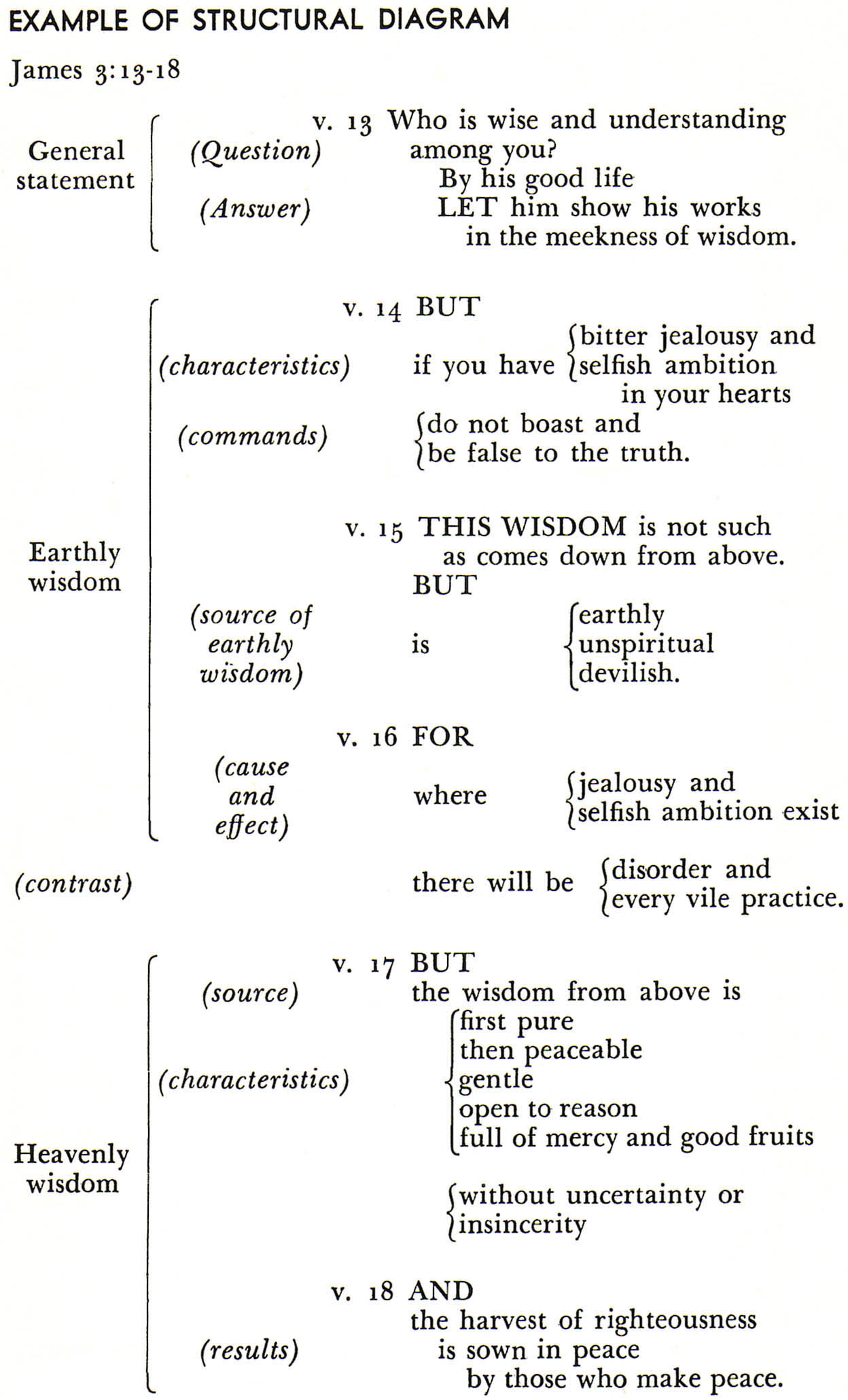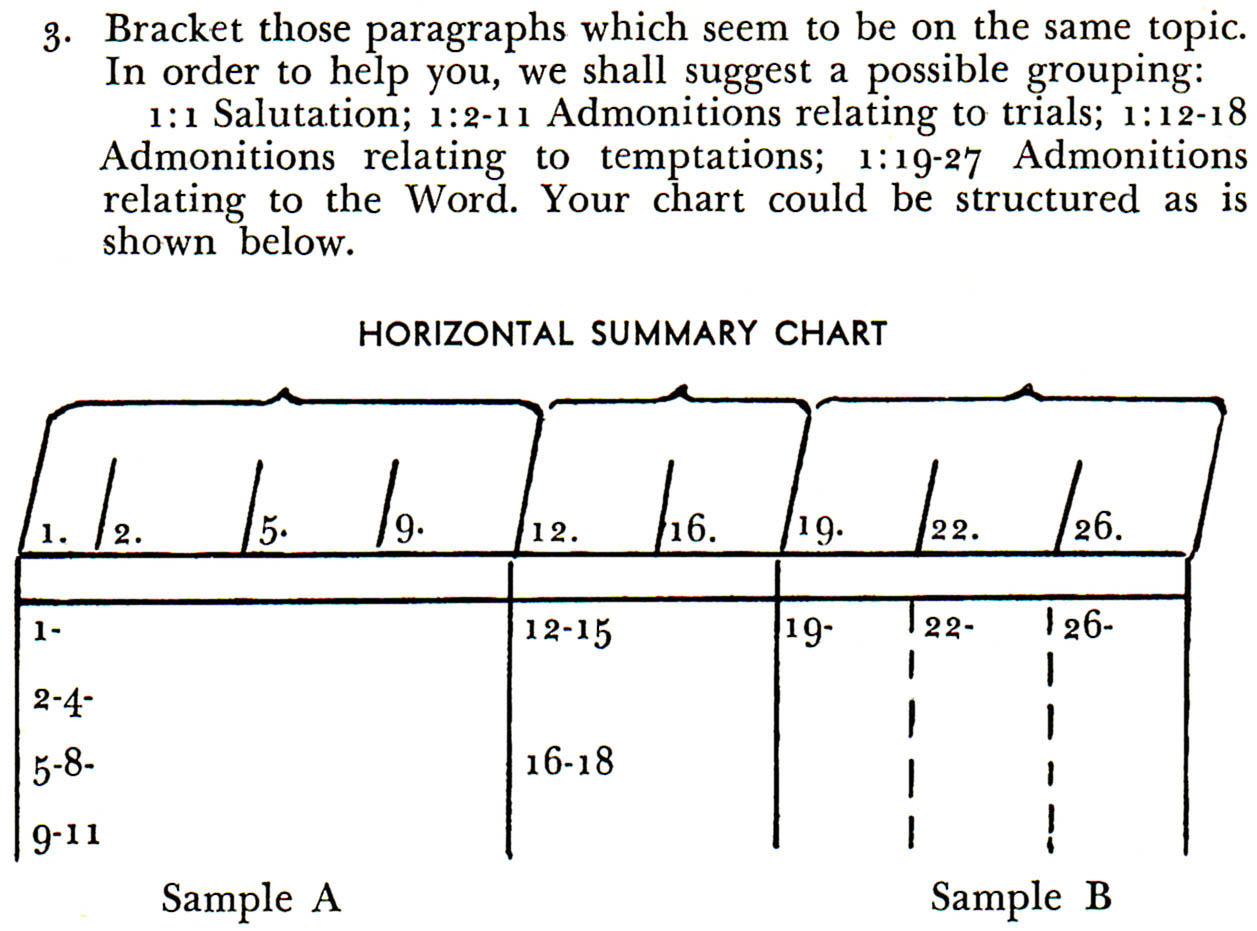
Methodical Principles
OBSERVING THE WHOLE

Methodical Principles
OBSERVING THE WHOLE
“I can observe individual truths, but it is harder to see the passage as a whole. I have difficulty finding the major points in the passage.”
Importance of Seeing the Whole
One real danger in Bible study is becoming lost in single phrases and verses of a Bible passage and never really understand the entire message the author was trying to communicate. This is a special danger when using the skills discussed in our previous lessons. This is the reason summary suggestions were included in each “Try It Yourself” exercise. We must beware of getting too involved in words and phrases, no matter how interesting and meaningful they are. We need to observe words and phrases in relation to the whole sentence, whole paragraph, and whole chapter. We need to understand the relationship of single truths in verses to the entire message in a chapter or book. Otherwise we will not fully understand the author’s message.
In order to understand the “whole” we need to learn how to analyze the structure of a Scriptural passage – the way in which the author arranged his material.
Definition
The term “structure” refers to the underlying design, framework, skeleton, organization or arrangement of material. Anything that is planned with a specific purpose in mind will have structure, whether it is a building, car, piece of music, watch, or literary composition. Insight into the design and structure of a production helps us better understand the production’s purpose.
We might compare this process of observing the structure of a passage to observing a new house. Imagine inviting a friend out to see your new house. Upon arriving, various parts that would make up your house are scattered all over the yard – window frames and windows, doors, walls, bricks etc. If you said, “Here is my house,” your friend might reply, “I see the parts that make up your house, but I still don’t know what your house looks like.”
So it is in Bible study. It is not enough just to see the parts, nor to understand the parts. You must see the parts in relation to the whole, how they contribute to make up the whole message.
How to Observe Structure of Paragraphs
In order to see how material in a passage is arranged, you need to write the passage on one sheet of paper, if possible. There are several ways to record material so that you can best see how the ideas are arranged.
Make a “Structural Diagram”
“Structural diagram” is a title given to a process in which you copy on a sheet of paper all of the words in a paragraph, but arrange the material in as graphic a way as possible.
Suggestions: (Note previous James 3:13-18 example of a structural diagram)
1. Copy down the units of phrases and clauses; separate the units so they will be most meaningful to you.
2. Line up major clauses and ideas so key ideas can easily be seen.
3. Place modifying phrases and clauses under the words they describe. Do not do this so much that you break up the thought pattern.
4. Place series of words, phrases, clauses, parallel thoughts and parallel constructions under each other. Sometimes it is helpful to bracket them.
5. Emphasize the important connectives such as, “but” “yet,” “for,” “therefore,” “then,” etc. Place them by themselves.
6. Arrange your diagram so Key words and Key ideas stand out. This can be done by Capitalizing words and by underlying words and phrases. It is also helpful to use colored pencils to highlight ideas. For instance, you might circle or underline in red words that are repeated.
7. Analyze the passage you have diagramed – (a) Study your verses and bracket those that seem to be on the same topic. Summarize the main thought in each grouping of verses and write your summary in the left margin. Try to summarize with one word or brief phrase. (b) Make note of commands, warning, conditional clauses, reasons and results, illustrations, etc. List comments in margin. (c) Use arrows and lines to show relationships, contrasts, comparisons and repetitions.

How to Observe Structure of Chapter
When analyzing a chapter, copying every word is too much, plus you probably cannot get it all on one page. So, you have to learn how to abbreviate and summarize statements so that you can get the meat of the passage before you on one sheet. A good way to analyze material in a chapter or book is to record the major ideas on a horizontal or vertical chart.
Horizontal Chart
1. Draw a line lengthwise across a sheet of paper. Block off as many spaces as there are paragraphs.
2. Title your paragraphs according to their content. Place your titles in spaces above your main line. In the sections below the line, list some of the teachings found in each paragraph.
3. Bracket those paragraphs which seem to be on the same topic.
Vertical Chart
1. Draw a vertical rectangle in the center of your sheet of paper, the length depending on the length of chapter.
2. Divide the rectangle into as many sections as there are paragraphs in the chapter.
3. Summarize major ideas in each paragraph.
4. Bracket those paragraphs with similar ideas.
5. In the margin record summary titles for paragraphs.


In making your chart, try dividing the lower section according to the major divisions, as in Sample A, or according to the paragraph divisions as in Sample B. If using Sample A, list your ideas across the entire division and you will not be as crowded for space. If using Sample B, list your ideas in the smaller columns. If there are many paragraphs, your columns become narrow and space for writing may become crowded.
Make a Structural Diagram
In order to get a better concept of the teachings in chapter one, try diagramming some of the paragraphs. Study the suggestions given to help you construct a diagram, but remember they are not to be thought of as laws or regulations. Diagramming is a means of setting before your eyes a graphic picture of a portion of Scripture, usually a paragraph. The outcome of the diagram itself is not as important as the insight gained through constructing it. The example given of James 3:13‑17 is just one of many ways to diagram this paragraph.
For special practice
1. Diagram these paragraphs: James 1:5‑8; 12‑15; 22:25; 26‑27. Analyze structure and write comments in margin.
2. Diagram Luke 12:22‑30. As a hint, this section is a good example of a general statement, two illustrations and then a concluding statement.